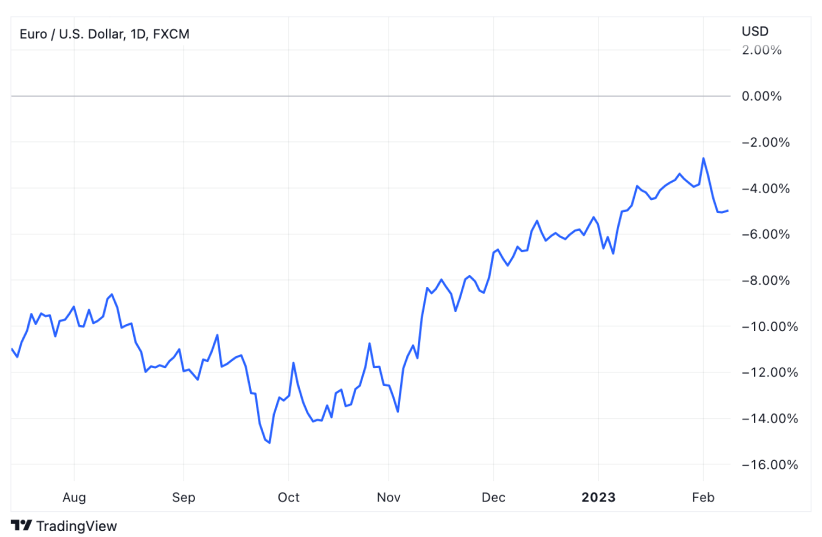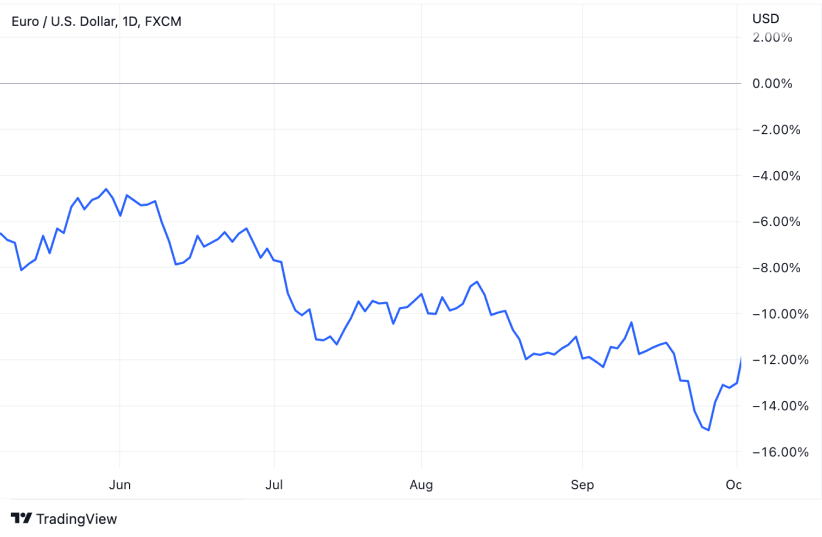The EUR/USD is probably one of the most important and popular currency pairs in the world. For good reason, of course. 2022 became historical for this duo – at certain points the euro was cheaper than the US dollar, for the first time in a long period. The scale of the European crisis was appalling, and the USD was rapidly growing against most world currencies – everything got back on track. This post is about what happened and how to choose between the euro and the dollar at the beginning of 2023.
The year of 2022 was expected to be the first post-Covid year and, therefore, a moment for mass travel reopening and a strong push for the world economy. Instead of that, we were faced with a new crisis that is optimistically called ‘permacrisis’ – caused by the military conflict between Russia and Ukraine which led to global economic malaise.
Prices in stores and everywhere else were rising, while stock and crypto markets were declining, most currencies didn’t look reliable – so, what should we do in this situation? The answer is on the surface. You should inject your funds in greenbacks. That’s what many people around the world would opt to do. In a downturn, the USD traditionally becomes a safe haven for investors who want to save their money.
At the same time, the Federal Reserve applied quite a hawkish policy. The American regulator raised the interest rate much more actively than most central banks making the US currency more attractive for investors. To make sure you don’t miss rate hikes and other significant events, you can use the economic calendar – it helps traders and investors to stay tuned and thereby improve their analysis.
The symbiosis of these two factors has already propelled the USD to the top. The greenback is stronger than other major currencies – giving it a ‘Kratos from God of War’-like status over the others. In addition, we shouldn’t forget that Europe is geographically closer to the military conflict and its economy is more dependent on Russian energy products. As a result, it affects European countries much more than the rest of the world. Anticipation of a cold winter, rise in energy prices, a stream of refugees from Ukraine, the not particularly active policy of the European Central Bank – all these things made the euro an outsider in the currency race.
Let’s take a look at the chart demonstrating what happened.

As we can see, by the middle of autumn, the euro position seemed hopeless enough. But then… take a look at one more chart.

The euro almost managed to come back to the ratio of the beginning of 2022 and the experts have already changed their forecasts about the future of this pair. Now is the best time to analyze everything that has happened.
Firstly, the Federal Reserve eased its policy. Investors don’t expect significant interest rate hikes in the US in 2023 – therefore the USD becomes a less lucrative investment. At the same time, the European Central Bank on the contrary set the course for raising the rate of interest.
The second, and even more important factor (strange though it might sound) is the weather. Many people were frightened of a cold winter in Europe amidst rising energy costs. But the temperature outside has been pretty nice and has allowed Europe to save reserves in storage facilities. Simultaneously energy prices have decreased, and the economic situation has improved.
The third reason is China putting competitive pressure on the USD. The great firewall country has recently eased its Covid restrictions which leads to the growth of the Chinese economy, manufacturing and stock market. Also, it resolved the issues with global supply disruptions, which has been severe since the beginning of the Covid pandemic. Generally, emerging countries including China became more attractive for investors, causing the capital outflow from the USD. As they say, one man's trash is another man's treasure. But we would rephrase it – “A loss for the dollar is a gain for the euro”.
Now, the EUR/USD currency pair rate is about 1.08. Experts believe that – due to the all above-mentioned reasons – the euro may hike to 1.15 by the end of 2023. And then the European currency could even continue its growth in 2024.
But before you make any trade decisions, you should carry out your own research. Especially as long as the geopolitical situation remains complicated, and its changes affect the rates (and not only them) in unpredictable ways.
This article was written in cooperation with TradingView
